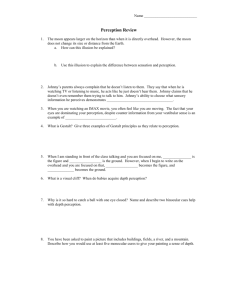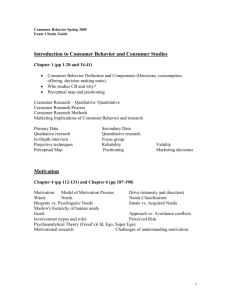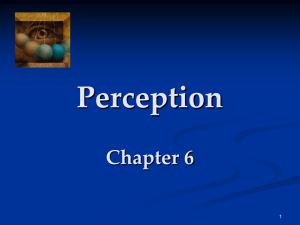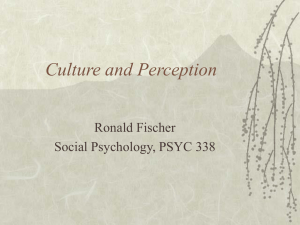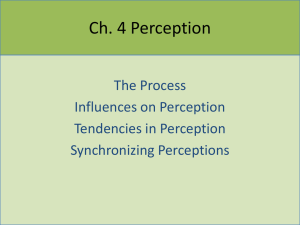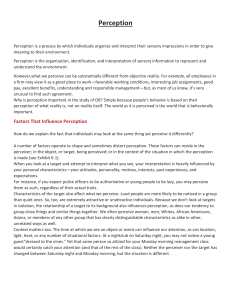Review Quiz Unit 4
advertisement
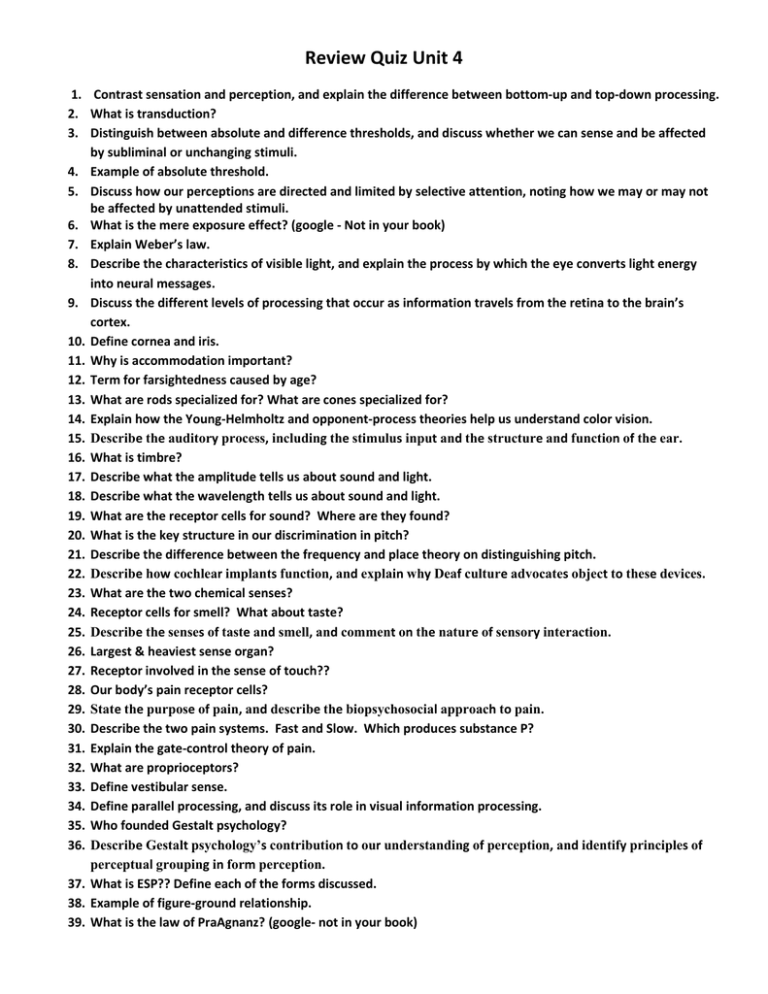
Review Quiz Unit 4 1. Contrast sensation and perception, and explain the difference between bottom-up and top-down processing. 2. What is transduction? 3. Distinguish between absolute and difference thresholds, and discuss whether we can sense and be affected by subliminal or unchanging stimuli. 4. Example of absolute threshold. 5. Discuss how our perceptions are directed and limited by selective attention, noting how we may or may not be affected by unattended stimuli. 6. What is the mere exposure effect? (google - Not in your book) 7. Explain Weber’s law. 8. Describe the characteristics of visible light, and explain the process by which the eye converts light energy into neural messages. 9. Discuss the different levels of processing that occur as information travels from the retina to the brain’s cortex. 10. Define cornea and iris. 11. Why is accommodation important? 12. Term for farsightedness caused by age? 13. What are rods specialized for? What are cones specialized for? 14. Explain how the Young-Helmholtz and opponent-process theories help us understand color vision. 15. Describe the auditory process, including the stimulus input and the structure and function of the ear. 16. What is timbre? 17. Describe what the amplitude tells us about sound and light. 18. Describe what the wavelength tells us about sound and light. 19. What are the receptor cells for sound? Where are they found? 20. What is the key structure in our discrimination in pitch? 21. Describe the difference between the frequency and place theory on distinguishing pitch. 22. Describe how cochlear implants function, and explain why Deaf culture advocates object to these devices. 23. What are the two chemical senses? 24. Receptor cells for smell? What about taste? 25. Describe the senses of taste and smell, and comment on the nature of sensory interaction. 26. Largest & heaviest sense organ? 27. Receptor involved in the sense of touch?? 28. Our body’s pain receptor cells? 29. State the purpose of pain, and describe the biopsychosocial approach to pain. 30. Describe the two pain systems. Fast and Slow. Which produces substance P? 31. Explain the gate-control theory of pain. 32. What are proprioceptors? 33. Define vestibular sense. 34. Define parallel processing, and discuss its role in visual information processing. 35. Who founded Gestalt psychology? 36. Describe Gestalt psychology’s contribution to our understanding of perception, and identify principles of perceptual grouping in form perception. 37. What is ESP?? Define each of the forms discussed. 38. Example of figure-ground relationship. 39. What is the law of PraAgnanz? (google- not in your book) 40. 41. 42. 43. 44. 45. 46. 47. 48. Describe the different monocular cues discussed. What is convergence? Disparity? Describe Stroboscopic Motion? Phi Phenomenon? State the basic assumptions we make in our perception of motion, and explain how these perceptions can be deceiving What is a perceptual constancy? What are the different types? Define perceptual set, and explain why the same stimulus can evoke different perceptions in different contexts. Describe the contributions of restored vision, sensory deprivation, and perceptual adaptation research to our understanding of the nature-nurture interplay in our perception. Decribe the famous Perceptual Illusions discussed in text. What is the carpentered-world hypothesis? (may not be in your book either) Free Response Tips: Describe in detail how you visually perceive an object. Use terms given in order to correctly describe the sequence of events involved in your example of visual perception. Do the same for how you perceive vibration to sound.





